Space race or four lectures in five days
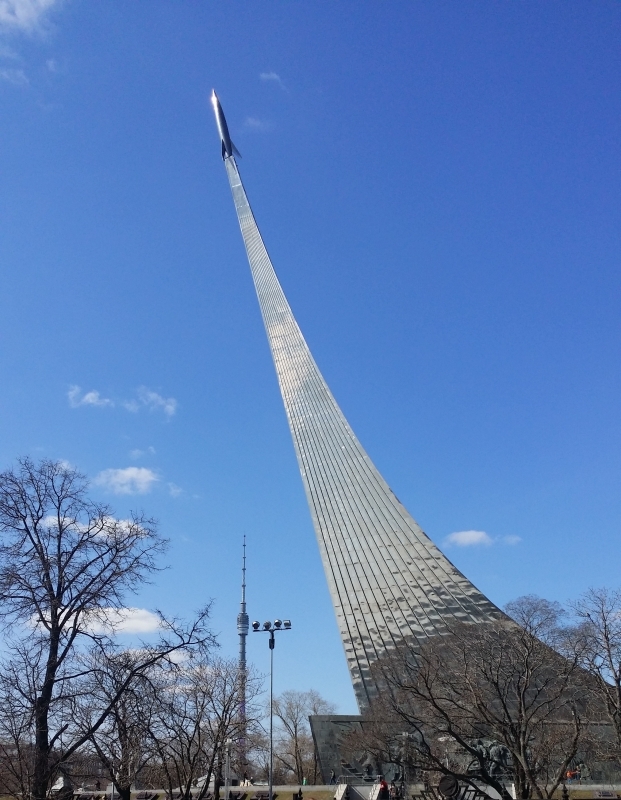
This year Cosmonautics Day fell on Tuesday. Therefore, I decided to strangle the toad and, having spent events in Ufa, fly to Moscow. And, since a trip without lectures is a waste of money, I managed to give four lectures in five days. Also, in Moscow, I visited the Cosmonautics Museum, virtually docked with the ISS on the simulator there, and looked into S.P. Queen. I offer you a report-report on these events.
Friday April 8th
The day began with the opening of the Gagarin Center. And in the evening at the Art Club I gave the first lecture. On the occasion of the holiday, the administration wanted something fun, so we chose the lecture “Cosmic tales”.
In a small but cozy room, “Cultural Fridays” are constantly held, at which various speakers speak. There were twelve people, almost a full hall.
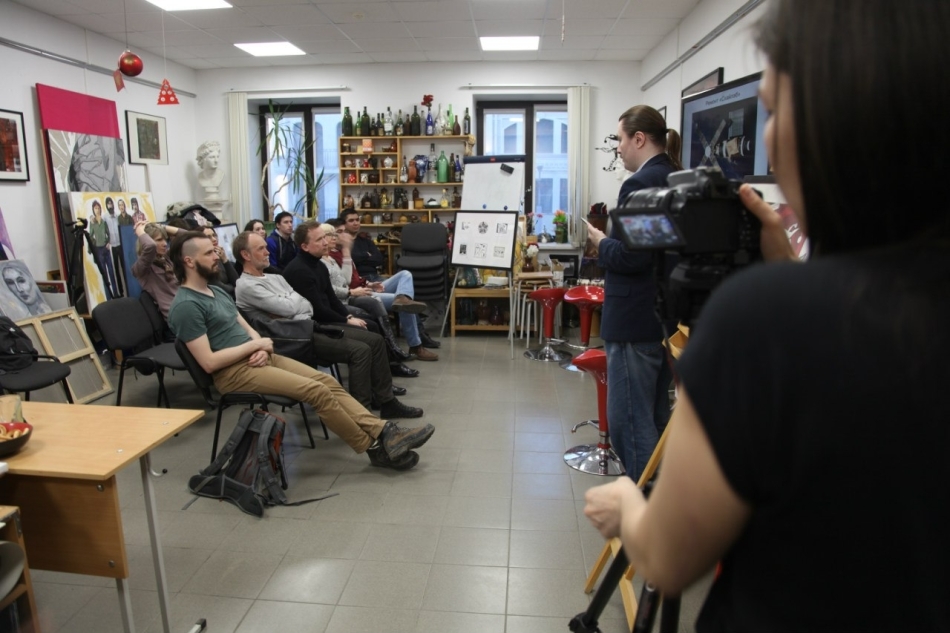
"-So, we need to come up with a disease of someone from the crew. And let's say that our Bluford (on the slide) turned white?
-If you just think so joke, then the closest place to space will be the office on the fifth floor, in which announce your deduction from the astronaut squad! "

The lecture was not very different from the 2014 version, which was recorded and posted on YouTube. You can listen, she’s funny.
Sunday, April 10
On Sunday, in the Ufa planetarium, a lecture-reconstruction of Gagarin’s flight was delivered. I have been implementing this idea in different versions for the third year already. In 2014, I wrote a material in which I told how to cross reconstruct a flight in the Orbiter simulator with the movie “First Orbit”. In 2015, he carried out this reconstruction in the Art Club. The event went well, but a drawback was revealed - a long boring section of the flight in orbit, where nothing special happened. Therefore, this year I decided to break the per-minute correspondence, skip boring sections and comment more on what is happening. And I saved the movie “First Orbit” and sometimes included it to demonstrate Gagarin’s real negotiations and beautiful views. "Assembled" design looked something like this:
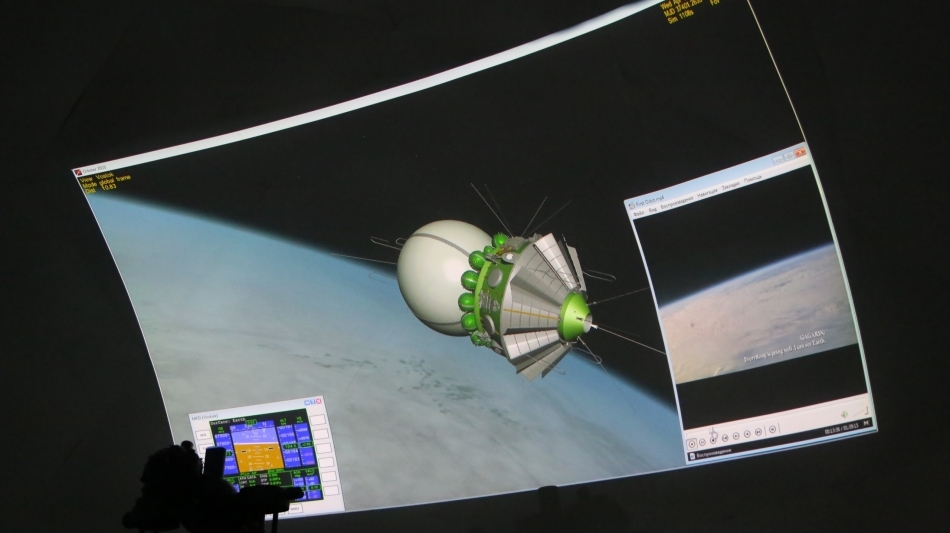
The window at the bottom left of the screen is an external multifunction display. Gagarin had no instruments that measured the exact height and speed, and on this MFD it was possible to bring them out and comment. The only need for a little unusual lecture is to control the flight from the camera room, but this is not a problem with the microphone.
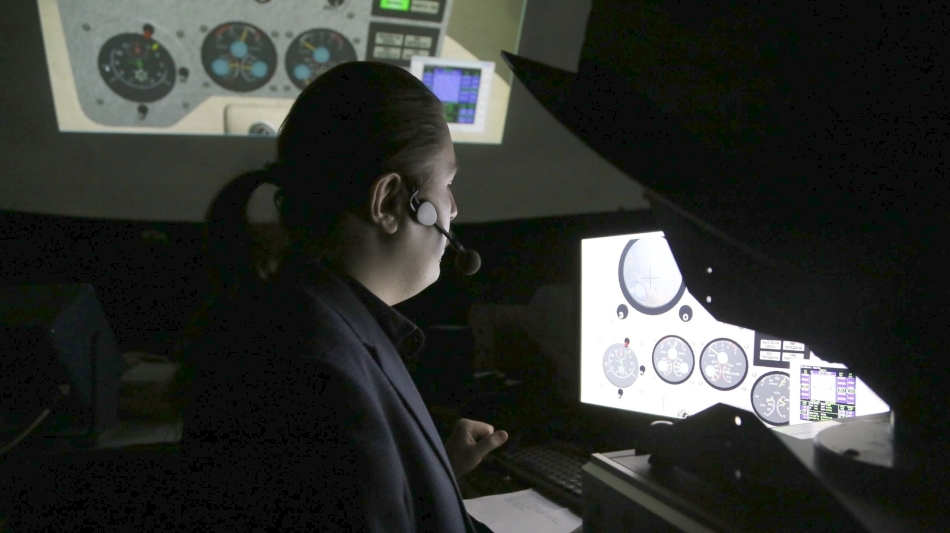
The audience came to an almost full hall, 60-70 people, which cannot but rejoice.

I did not record the video, there is an idea to make the same material in the format most convenient for YouTube, but it will not be soon.
Monday, April 11
Monday began at half past three in the morning. But my wife and I met the dawn already in the air. Funny, I flew a couple of times on ultralight airplanes and flew almost six hours on paragliders, but I still had no chance to fly on liners.
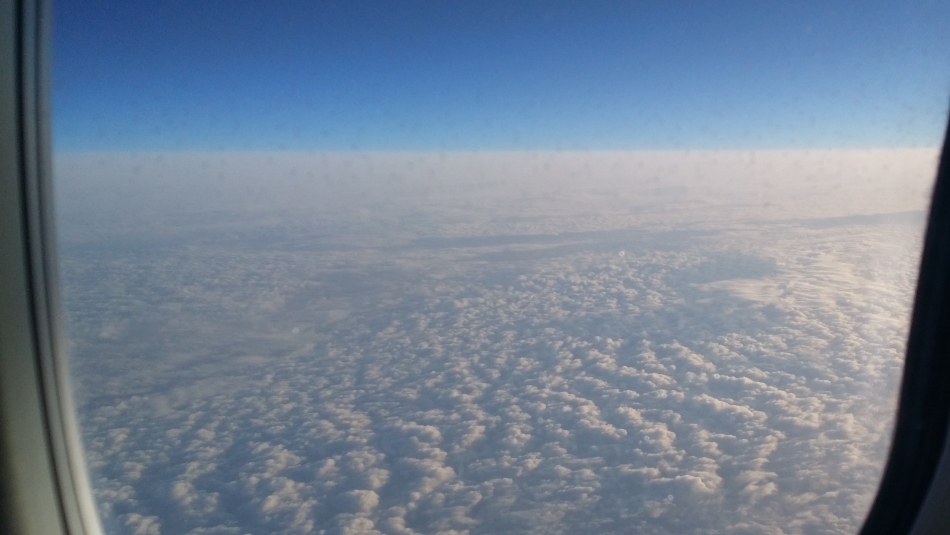
In Moscow, we walked a bit and settled in a pretty hostel at VDNH, designed in space style. Here, for example, almost a record from Pioneers, people did not smile in the original picture.
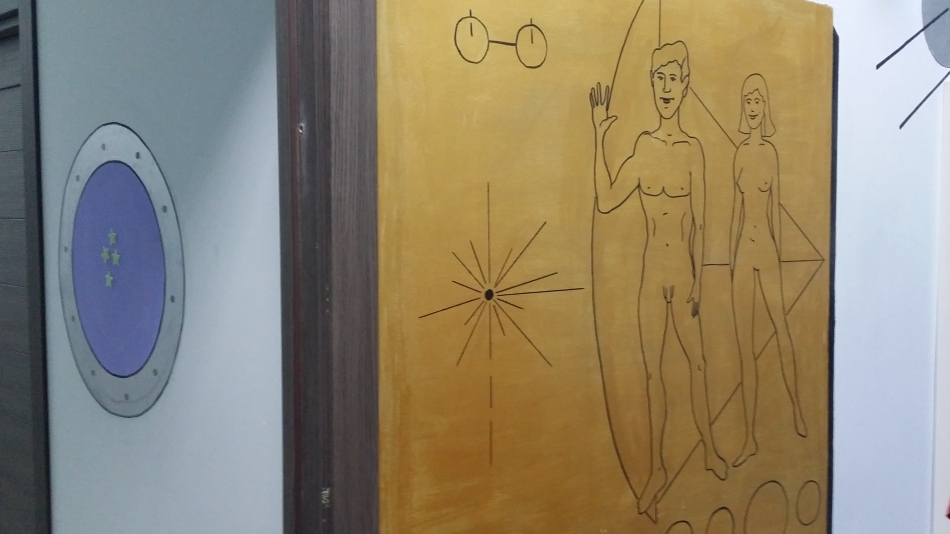
Monday's main goal is the Cosmonautics Museum.
-Wow!
-Not “Wow,” but “Wow!”
True, this is not the V-2 / R-1, but the stylization - the stabilizers are three, not four, and the form is different.

Structurally, the museum consists of two halls: objects representing milestones of the Russian cosmonautics are stored in a small first hall, and less epoch-making objects are located in a much larger second hall. The feeling that I came to visit old friends - almost everything is recognized without signatures on the tablets. On the other hand, there is an interesting feeling of size mismatch - some things seem bigger or smaller than they were perceived from the photographs. A feature of the museum is also that the exhibits are as close as possible to those that flew into space and made history. If the same historical apparatus did not return (or is stored in another museum, such as Gagarin’s descent apparatus), then this example, for example, shows the analogue on which the tests were carried out.
First disassembled satellite
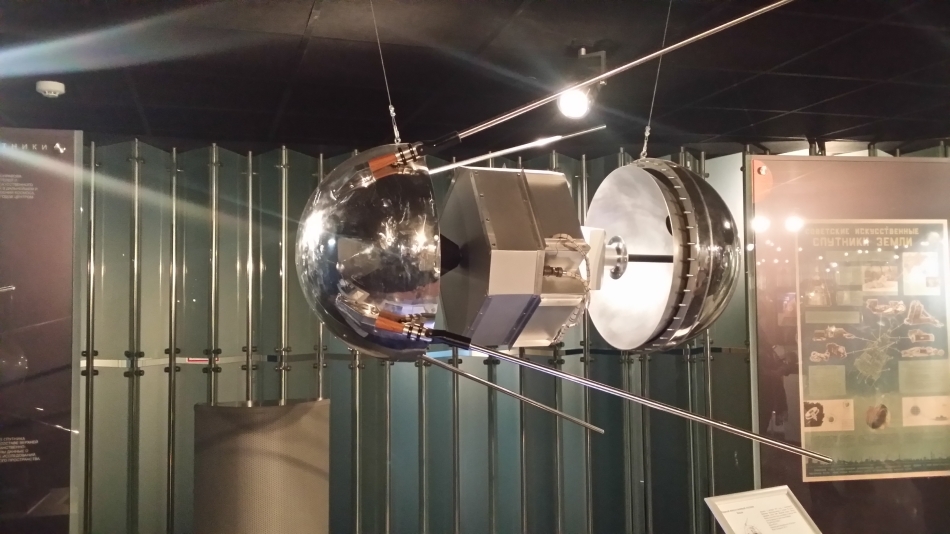
The Luna-1 station, the first to leave Earth orbit, and the Luna-2 station, which first hit the moon.
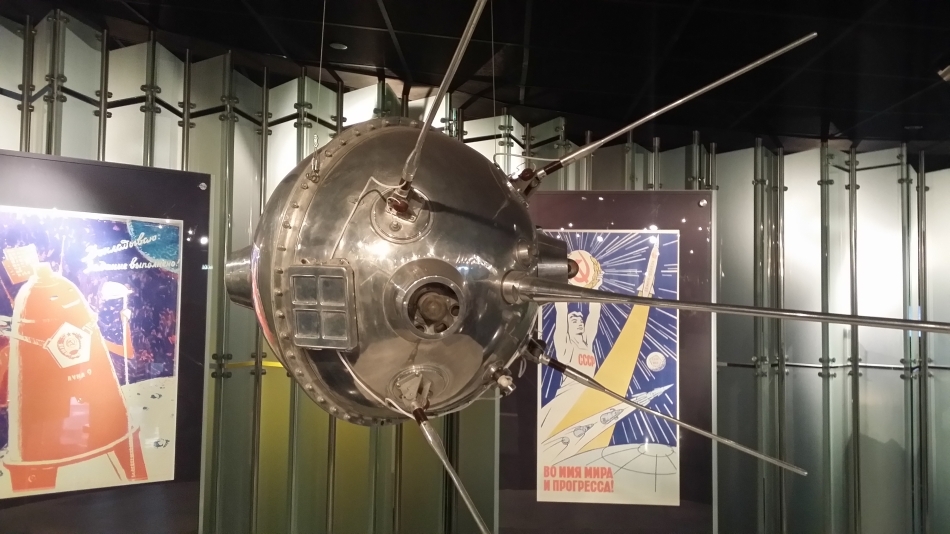
“Luna-3”, which first shot the back of the moon, it is also a “bath and laundry plant” - the film appeared immediately after the shooting, was scanned by the technologies of 1959, and the resulting image was transmitted to Earth.

The container in which the Squirrel and Strelka flew (the same one, there is even a dent from the blow during landing), and the Belka and Strelka themselves. The cutest exhibits.

The descent vehicle of the Vostok ship, similar to the one on which Gagarin flew. The interiors could not be removed due to the protective glass, but the reconstruction in Orbiter is very accurate. But the heat-shielding coating is an imitation, there are a lot of flying “balls” in Samara , and the real thermal protection is different.
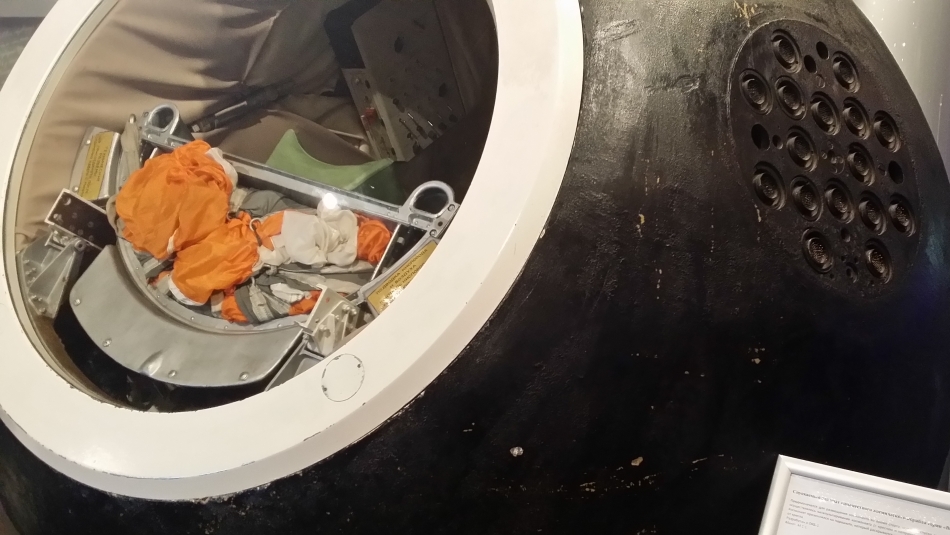
And the space suit SK-1 of the astronaut Vostokov.
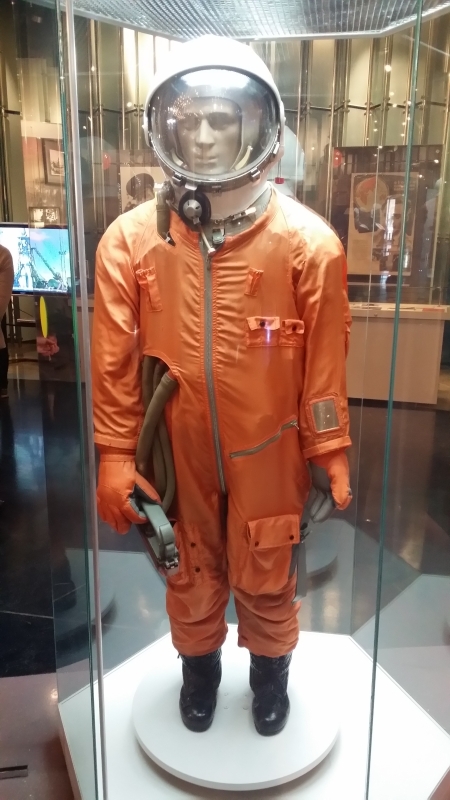
A lock chamber, similar to the one from which Leonov first went into space. At the bottom of the gas tank, it was inflatable, hello Bigelow.
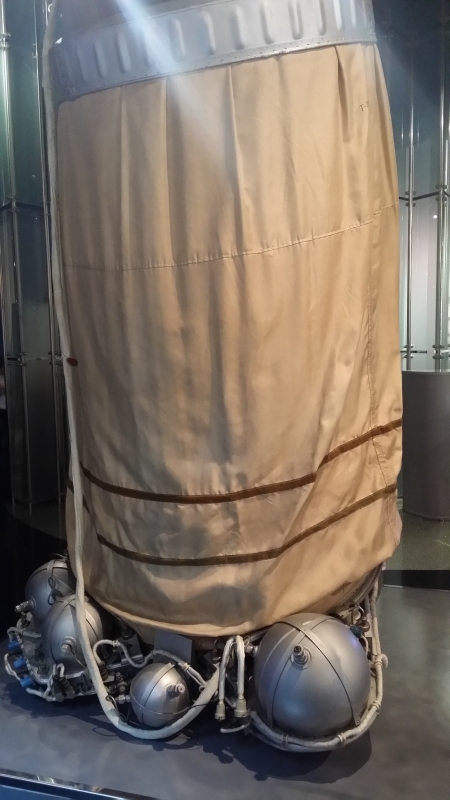
And the space suit "Golden eagle". Incidentally, it is noticeably lower than SK-1, but this is due to the mannequin, the folds on the legs are clearly visible below.
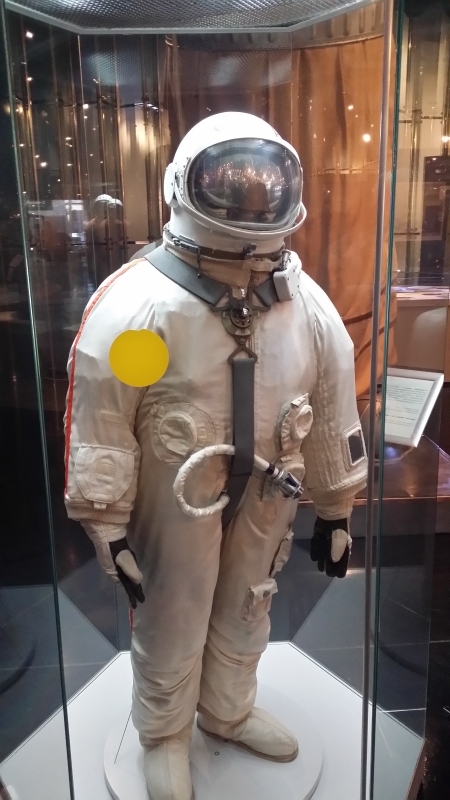
The station of the E-6 program, which in 1966, from the twelfth attempt, gently sat on the Moon ("Moon-9"), a flight module.
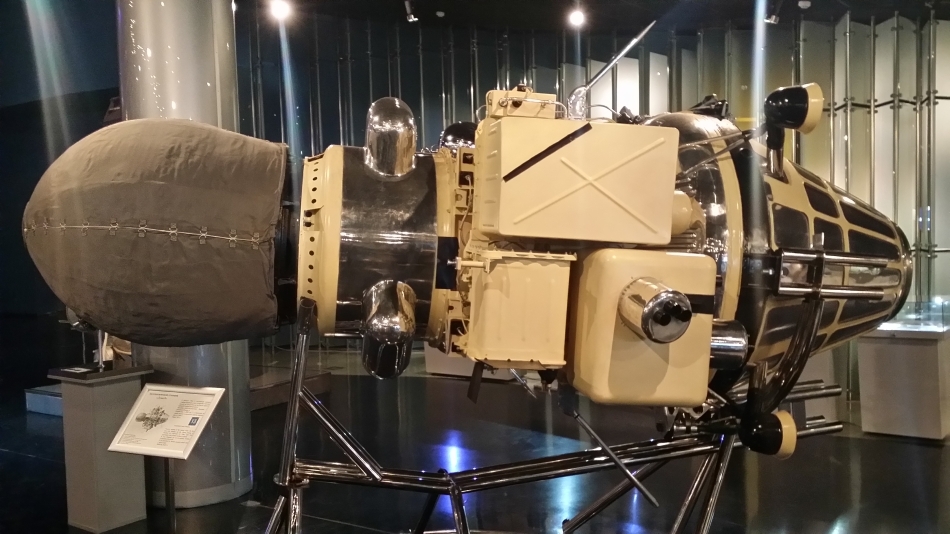
And the station itself, which in the previous photo is under the shock absorber cover on the left.
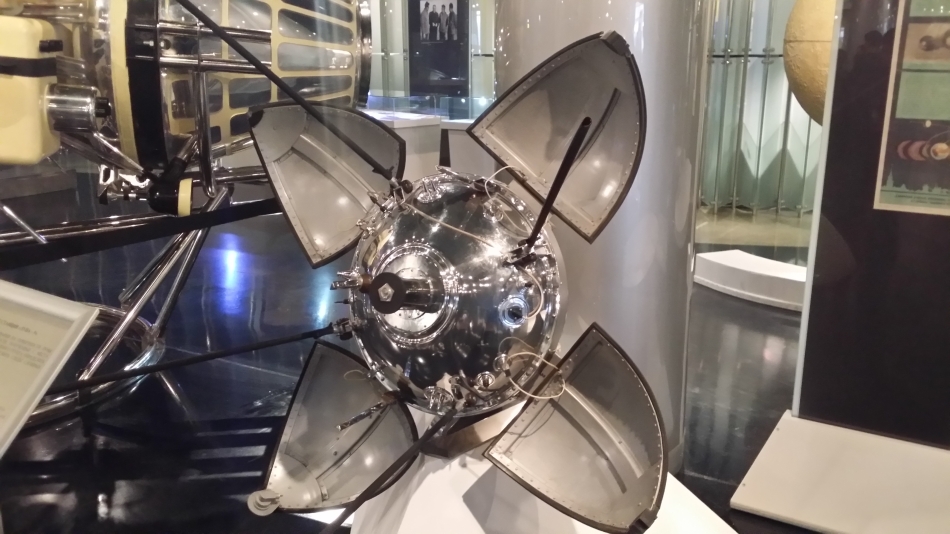
We pass into the second room. It begins with the history of astronautics. Here is the first Soviet rocket engine OR-1 Zander, made of a blowtorch.

And this is the GIRD 09 rocket, which in 1933, for the first time in the USSR, climbed 400 m. It was it that was launched in the famous scene in The Taming of Fire.
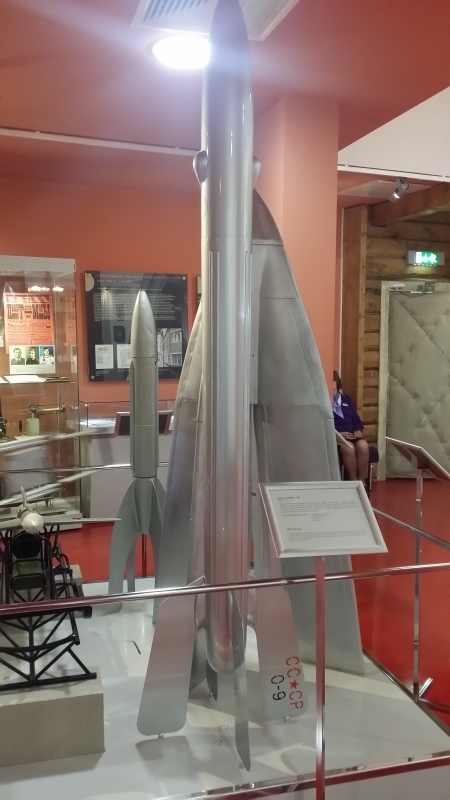
Some of the exhibits belonged to the temporary exposition of the Institute of Biomedical Problems of the Russian Academy of Sciences and showed modern experiments at the ISS. The Phantom “Matryoshka-R” is used to determine the radiation dose received in orbit, which should give us information on how to deal with radiation when we (humanity) still fly to Mars. By the way, pay attention to the completely neutral appearance of the phantom - in a similar experiment, the Americans used a plastic-covered skull of a female volunteer who gave her corpse to science, with which astronauts staged уг scare a colleague ’in orbit.

But this equipment explores the reliability of the astronaut in a long flight.
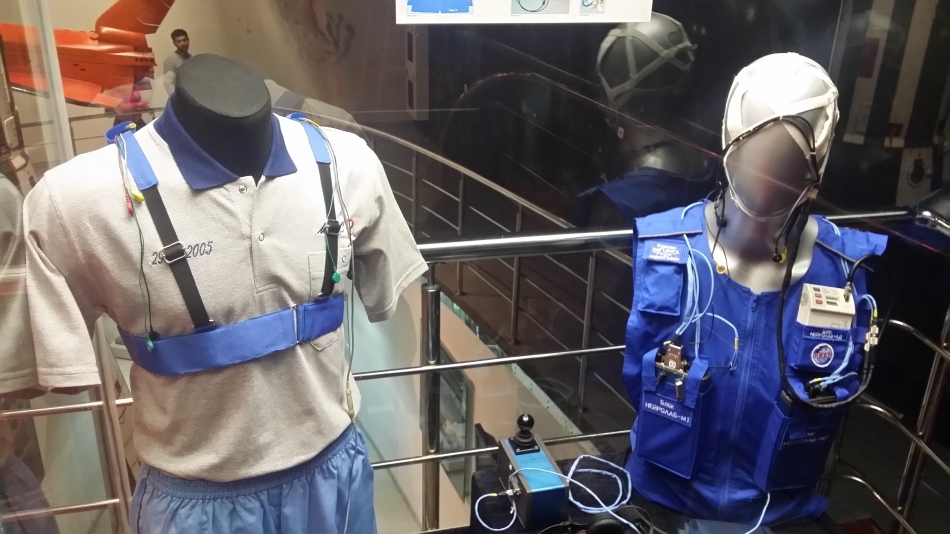
One of the most famous experiments is the “Plasma Crystal” by
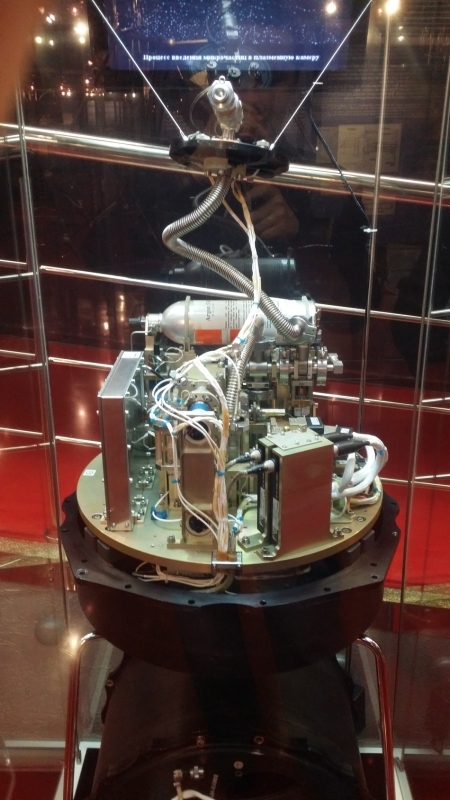
Bormashin. It does not cause much interest if you do not know that in 1978 astronaut Yuri Romanenko had a toothache 20 days before planting, and he worked heroically, trying pain in half his head due to a nerve pinched by inflammation, and the drill at the station wasn’t yet .
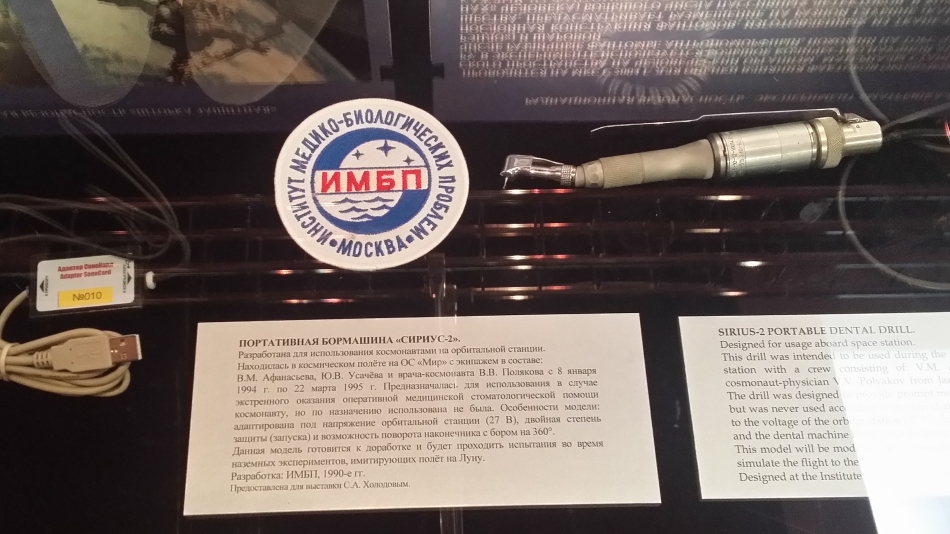
We return to the permanent exhibition. Few people will pay attention to this subject. And this is an interesting thing - the Rainbow ballistic capsule, with which it was possible to return small loads along with the Progress cargo ship. The truck burned out in the atmosphere, and the capsule withstood the descent. Now, however, they are not needed, and they are not used.
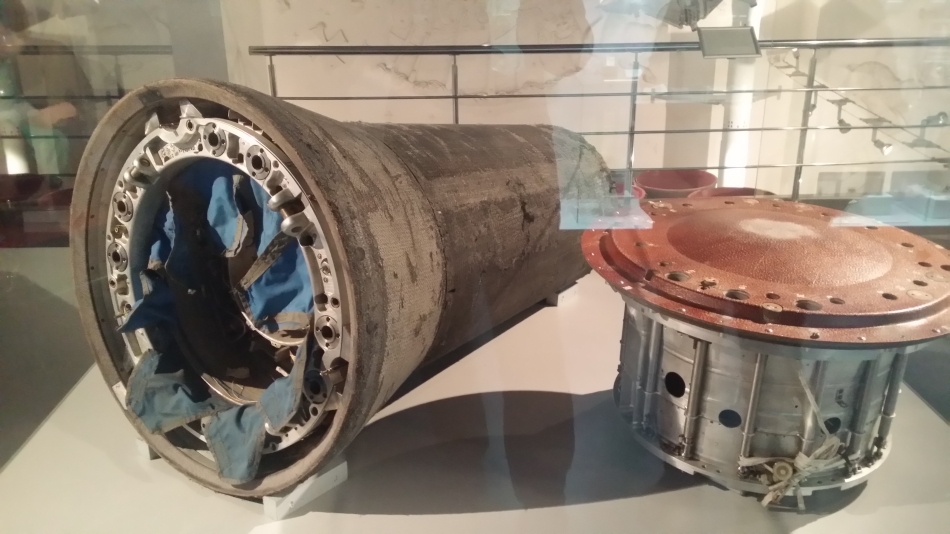
Old Soviet mannequin for assessing the effects of cosmic radiation. The exhibit is notable for the fact that the dummy used ordinary bread crumb and sawdust - in their properties they were comparable with the tissues of a living organism.
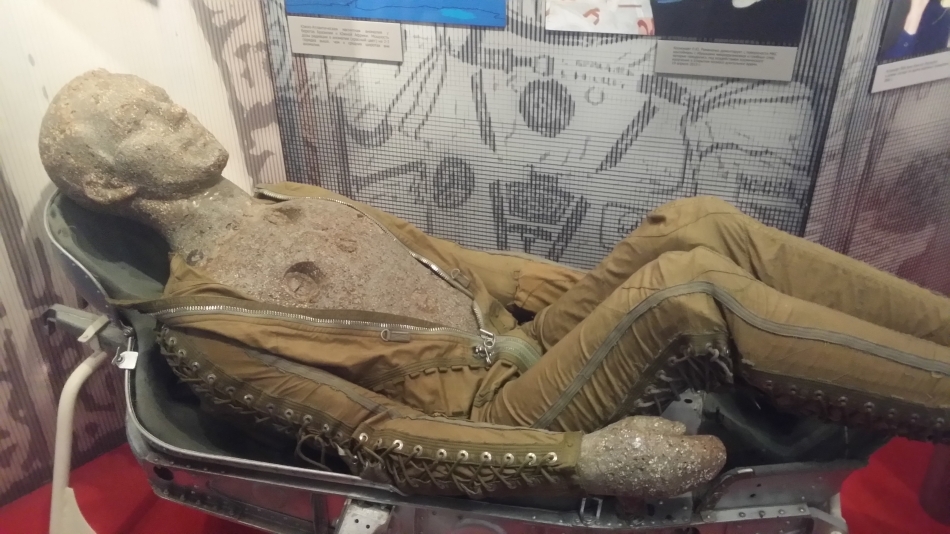
The interior of the base unit of the Mir station.

And here in 1997 there was a fire - the regenerative oxygen bomb caught fire.
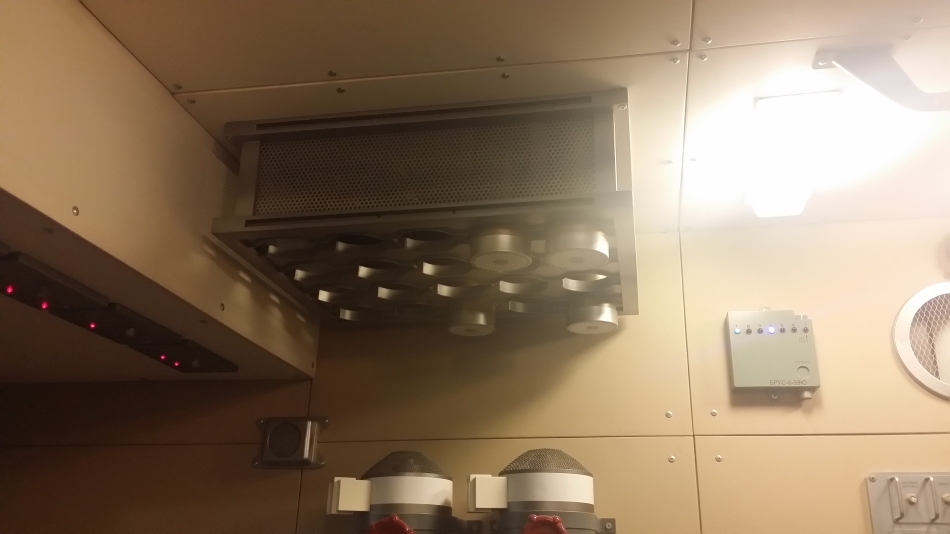
A classic of the genre is space food. If anyone else doesn’t know, the tubes have died out long ago, now they are eating on the ISS from ordinary cans and plastic bags. And here you can see the history of space food .
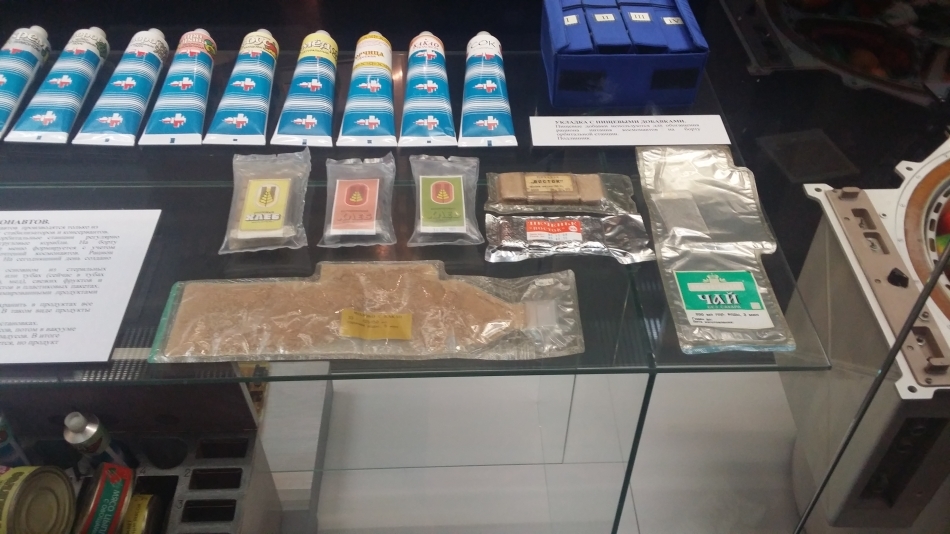
Toilet of the Soyuz ship. The history of toilets is also interesting.
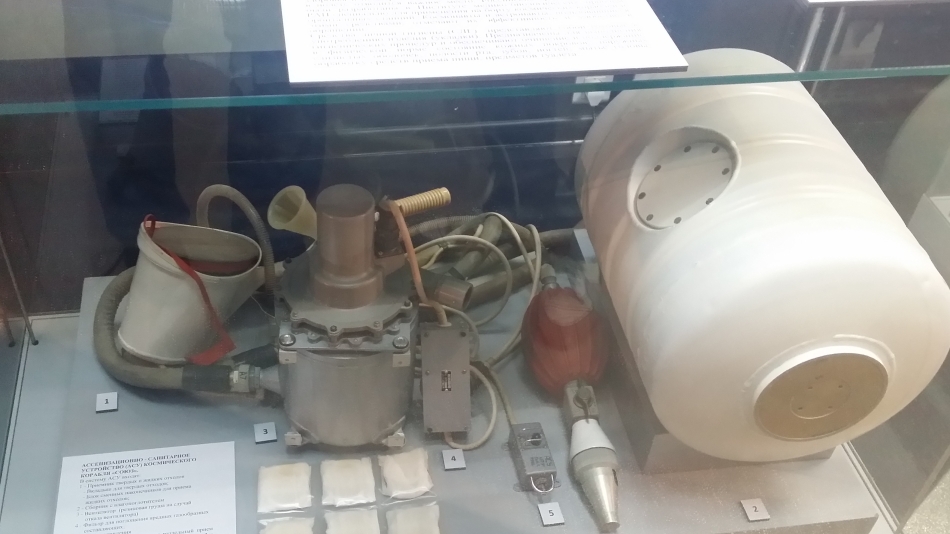
Loading suit "Penguin". The elastic bands in the suit give a load to the muscles so that they do not atrophy at all in zero gravity.
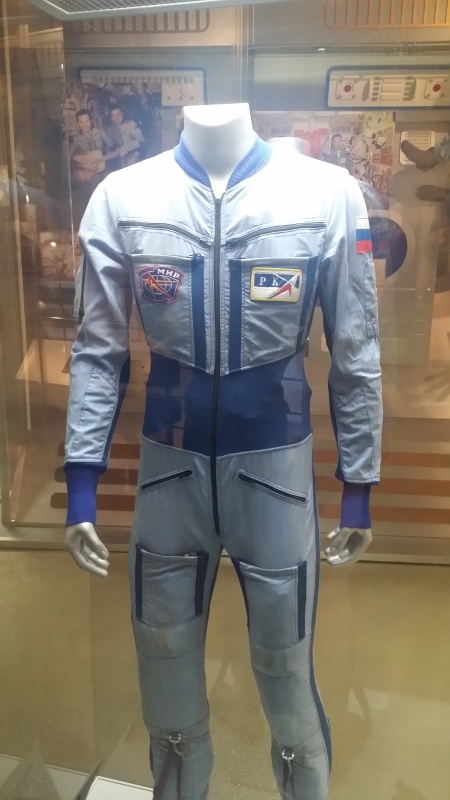
On the left is the Chibis suit, in which they are preparing to return to Earth - he pumps out air below, so that blood rushes to the lower part of the body, as in gravity. To the right is the Trout suit in case of emergency splashdown.
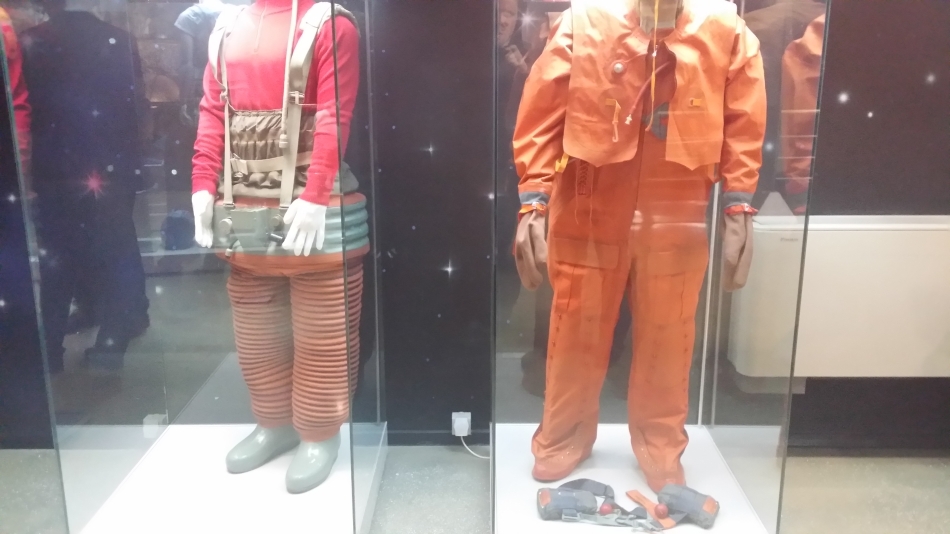
An unexpected meeting - the suit of the Apollo 11 astronaut Michael Collins.

Again, the technique - the landing module of the Luna-16 station, which brought lunar soil to Earth. He seems small here, but actually taller than human height.
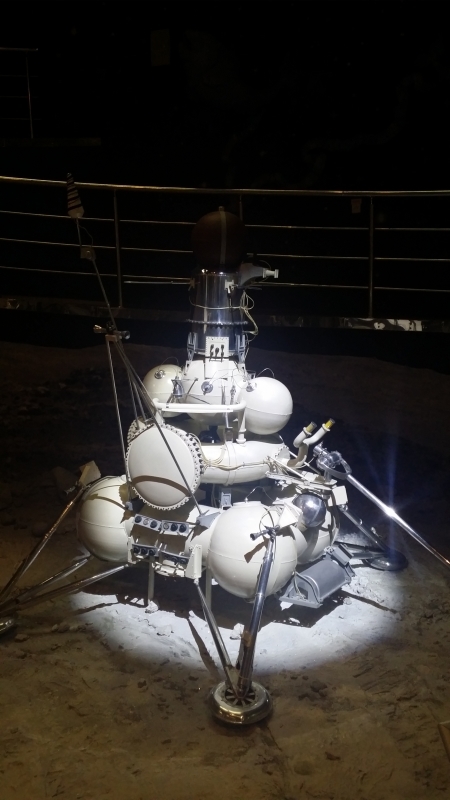
A very small descent vehicle that was returning from the moon.
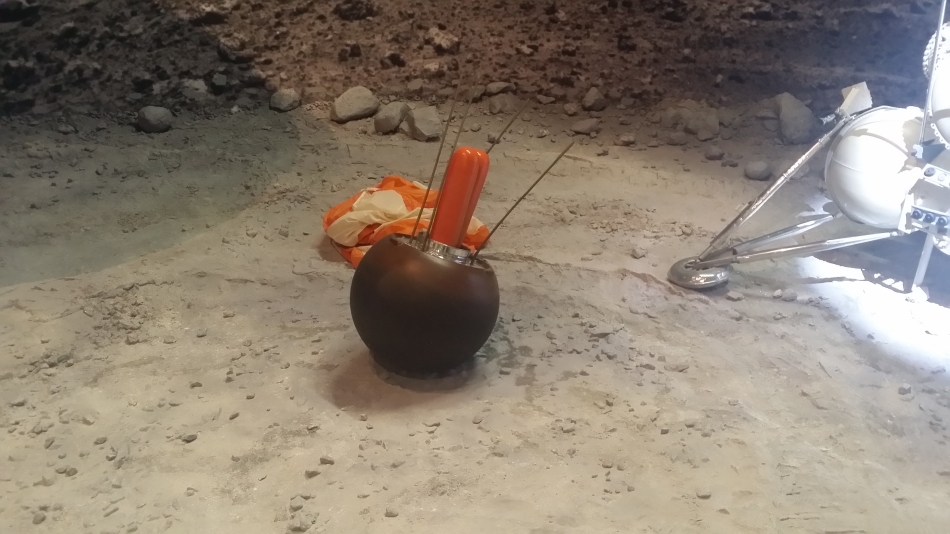
And the particles of soil that he brought.
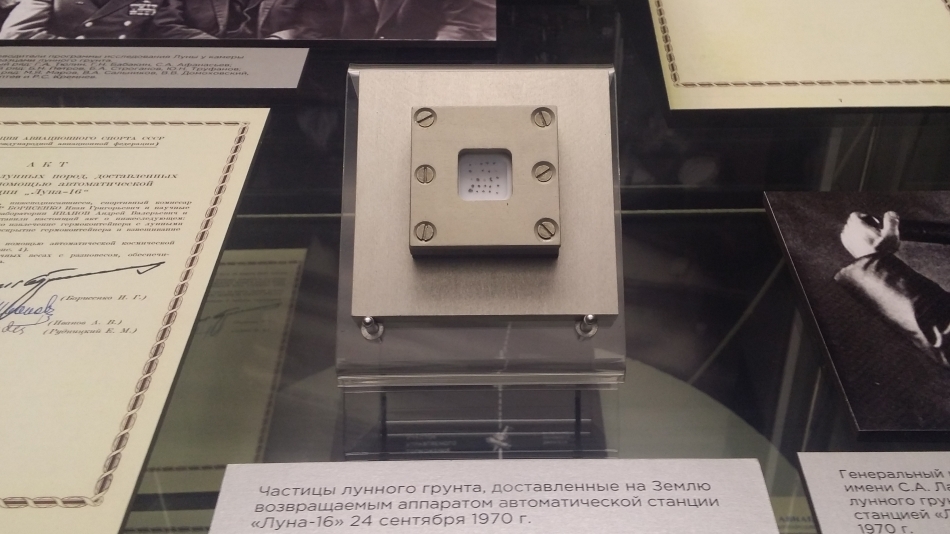
Satellite "Bion". I deliberately cut a “puck” out of the frame with additional experiments on the descent vehicle so that the biological satellite would be as similar to the Vostok ship as possible — they are close relatives .
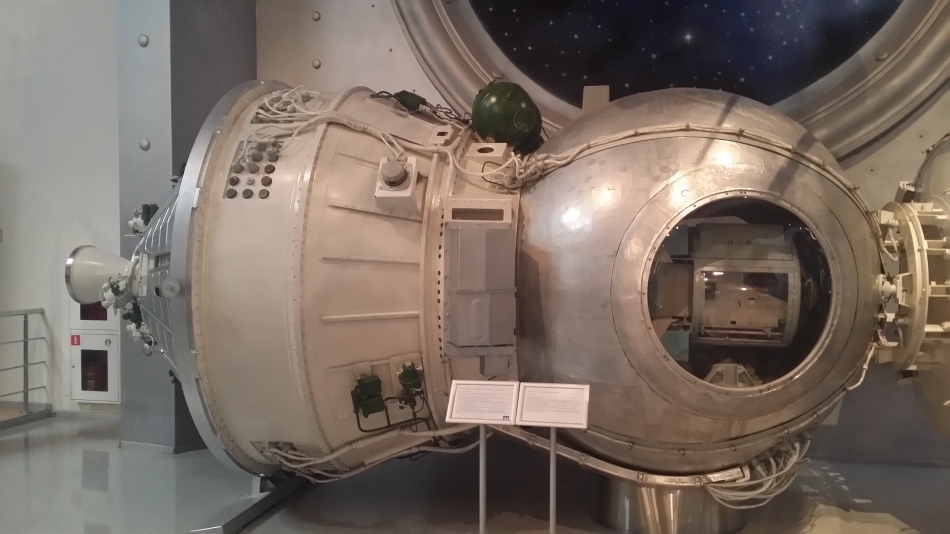
A lot is left behind the scenes. We watched the exposition for more than two hours, but it seems that we should come here for four hours at least.
After the halls of the museum, a test awaited me - docking the Soyuz with the ISS in a real simulator, the same as in the Cosmonaut Training Center. It inspires realism - with a height of 180 cm, I barely got into the lodgement in height, my legs even without a spacesuit block the periscope in the center, and the upper screens are too far away to be conveniently visible.
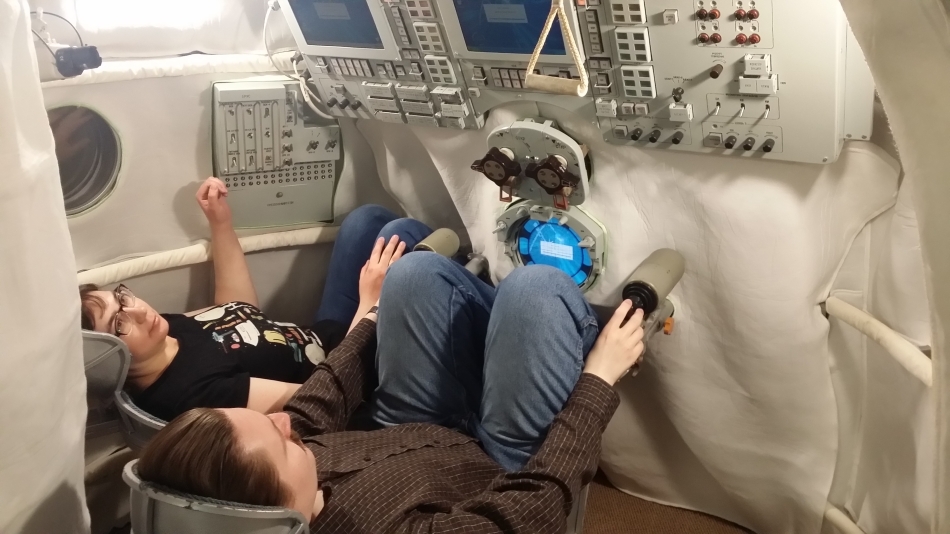
On the simulator, by the way, is Win XP.
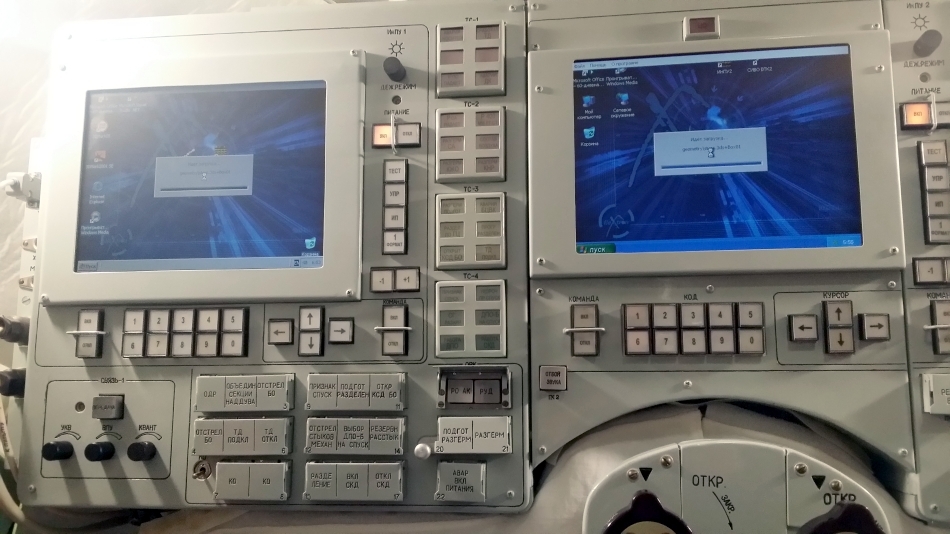
I have a lot of experience flying in Orbiter and KSP, I can dock them without problems even after a couple of liters of beer, but this simulator really made me soak. It turns out, unlike Orbiter, in a real "Union" the rotation of the ship is not immediately compensated by shunting engines, but accelerates the ship forward. In addition, the yaw axis there is inverted relatively familiar, and when I mechanically gave the handle to turn left and right, instead of correcting the situation, it got worse. With a mental cry, “Ah! How can I not crash into the ISS ?! ” I constantly pulled the toggle switch of the orientation engines responsible for moving back and forth, braked, but after a couple of turns everything started all over again. However, the understanding of orbital mechanics and skill was still not in vain.
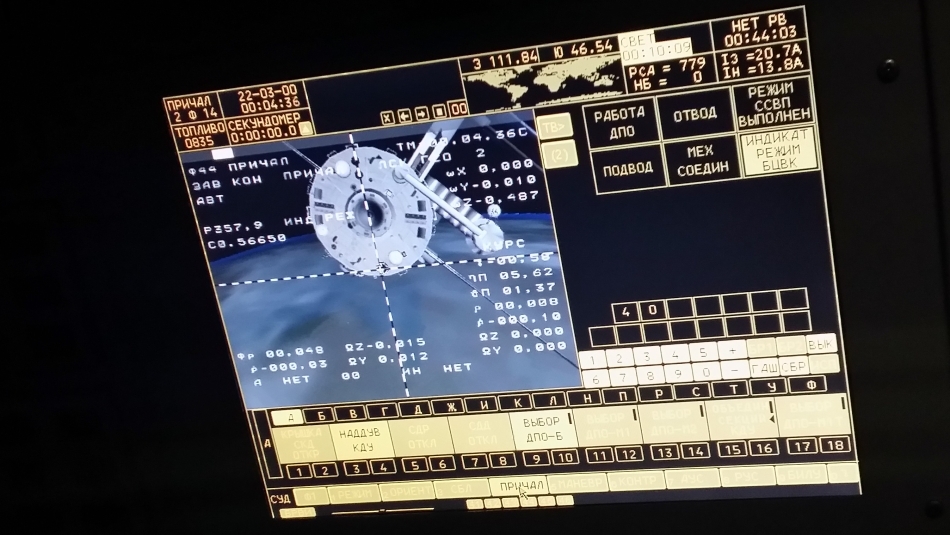
Another one or two minutes of tension, and there is a successful docking. In time - it's time to go to the cinema for a lecture. The topic of the lecture was the same as in the Ufa planetarium - reconstruction of Gagarin’s flight.
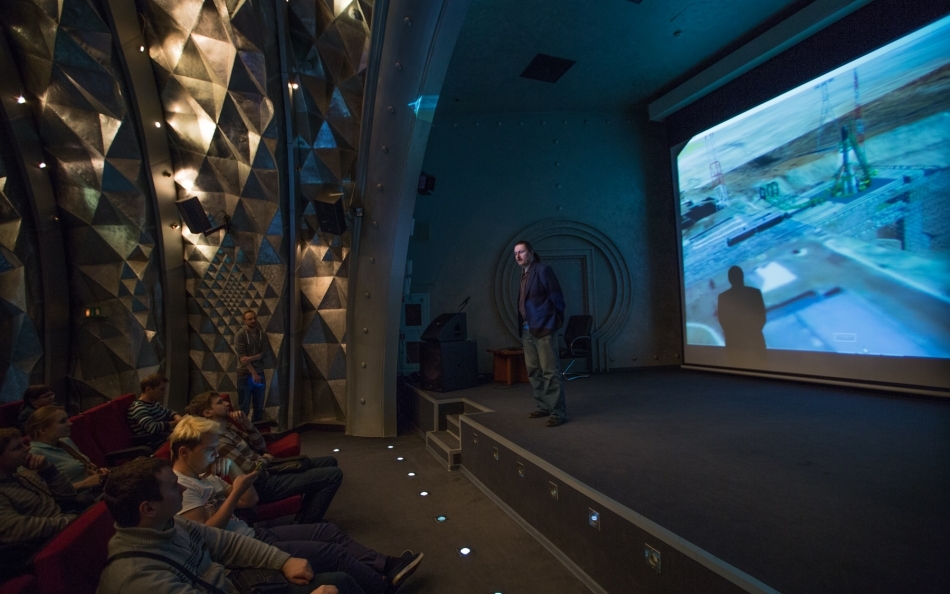
There were fewer people in the hall than in Ufa, about 30 people. Probably, the not very successful start time affected 18:30. Someone might not be in time from work.
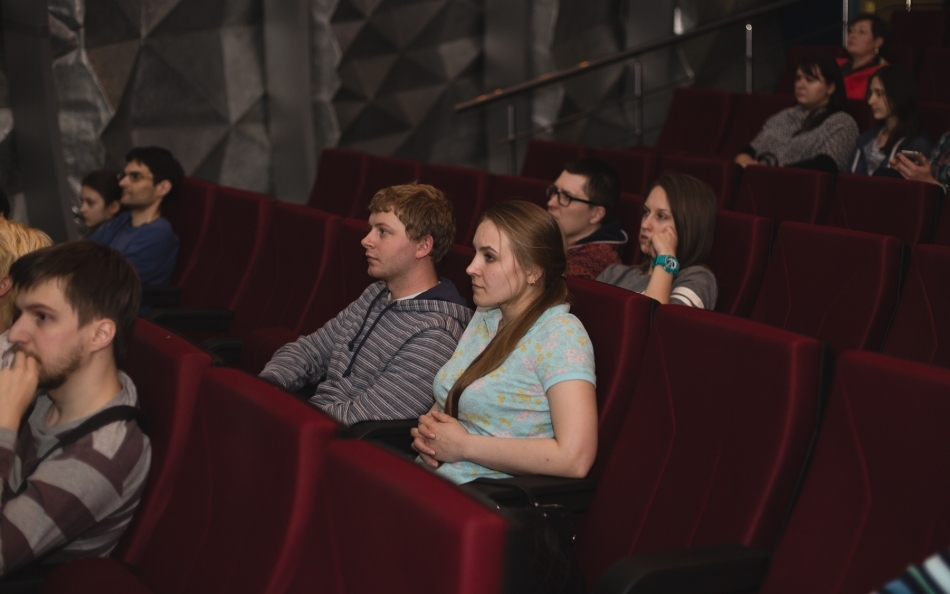
Of the people I knew, Konstantin Sofiev came up with whom we organized a Skype lecture at the Moscow City History Library, and Zelenyikot . Polites demanded that I talk to you separately after the lecture, but, alas, I had already eighteen hours to go to sleep, for which I apologize again.
Tuesday, April 12
On the morning of Tuesday, we visited S.P. Queen. It is an amazing feeling to be in a house in which books and things were left as they were in January 1967, when Sergey Pavlovich died.
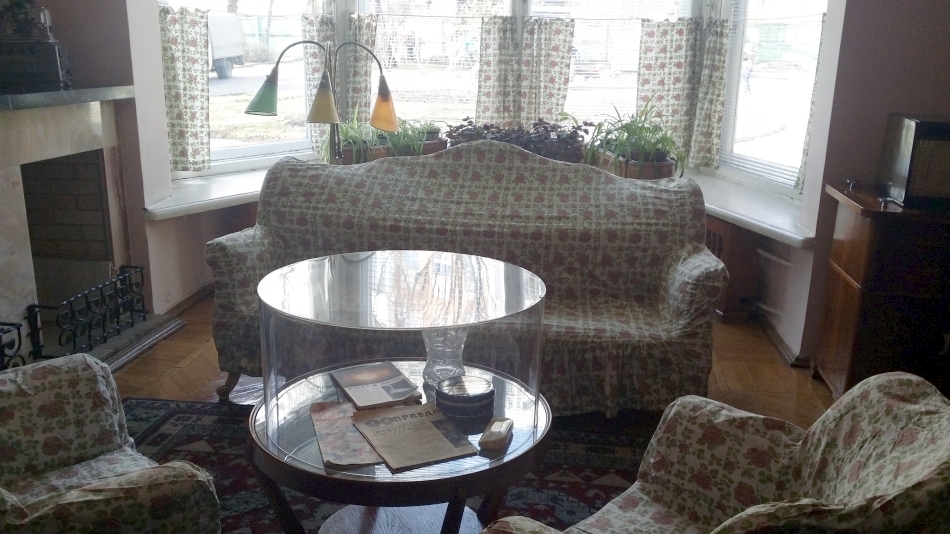
Study:
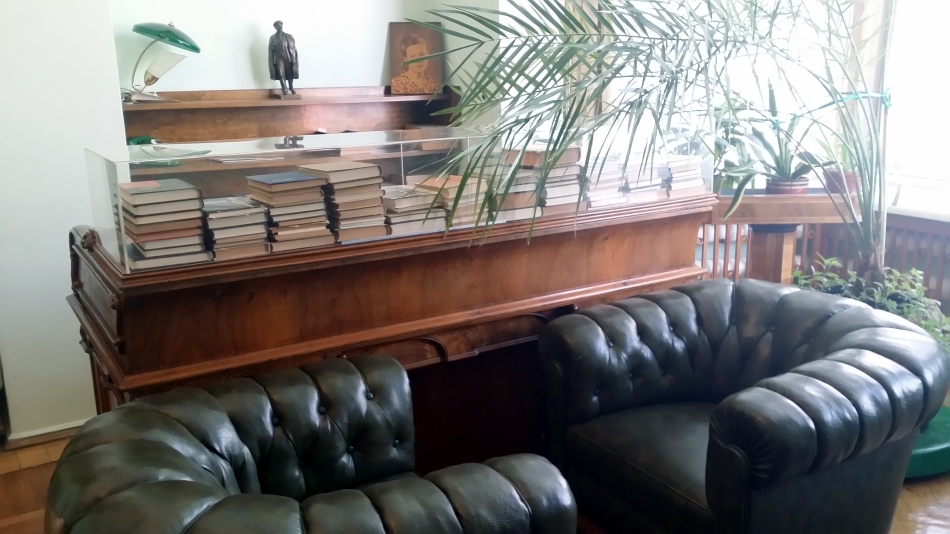
Bedroom:

Where else could two people carried away by astronautics go on April 12? Of course, on Red Square, to the columbarium near the Kremlin wall, in order to honor the buried there Gagarin, Komarov, Dobrovolsky, Volkov, Patsaev, Korolev, Nedelin, Kurchatov, Seregin. Alas, the wall was under repair, and ordinary people were not allowed directly to it.
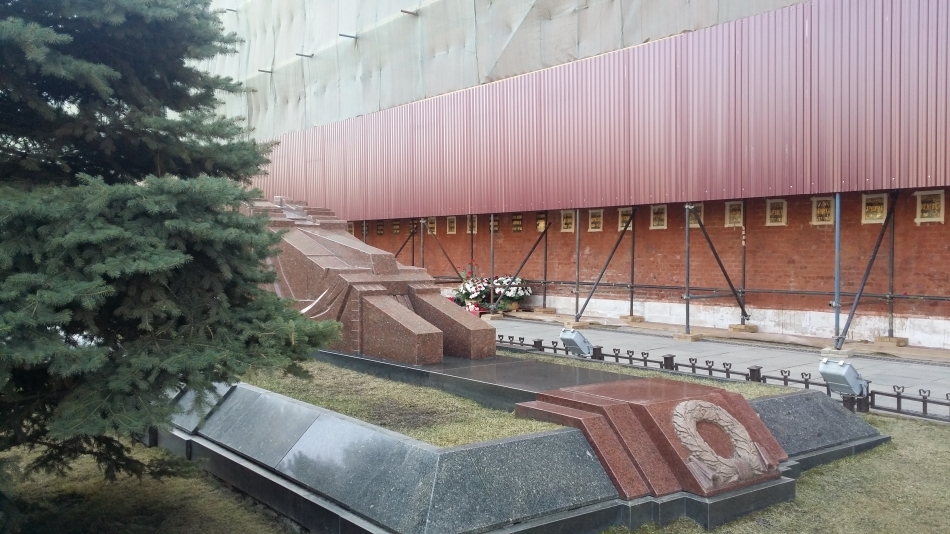
On the evening of Tuesday, I gave a lecture, "The Invisible Complexities of Space Technology," as part of the Gutenberg Smoking Room. Two other lecturers were Alexander Shaenko (with a lecture on “The Beauty of Space”) and Igor Tyrsky (with a lecture on “To Mars and the Moon in 40 Minutes”). Many spectators came, two hundred people, the organizers - well done. The video was recorded, it is expected on YouTube within a month.
Conclusion
Once again, I want to thank Dmitry Stalny, an employee of the Cosmonautics Museum, for the tour, access to the simulator, and room for the lecture.
The trip should definitely be recognized as successful, such popular science-tourist trips should be continued.
If you live in Moscow and have not yet visited the Cosmonautics Museum, then you are wasting your time in this city. For those who are going to go to Moscow, I advise you to put this museum on the top line in the list of what you want to visit.
PS Those who were at the lectures, please write feedback in any convenient way - what was good, what should be improved.
